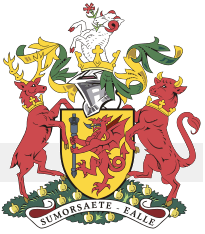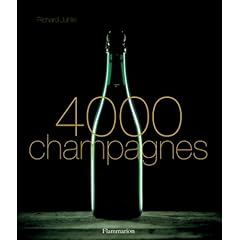
 England & France have needed European marriage counseling since the Dark Ages. France famously touts its epicurean delights while thumbing their noses at the oxymoron of an Escoffier English chef. Bangers and mash or fish and chips versus haute cuisine croissants and flambéed Crêpes Suzette. The crux of the latest battle du jour is the birthplace of sparkling wine, champagne. Dom Pèrignon is effervescing in friarly indignation in his grave right now after being asked to come up with a way to make the wine bottles stop exploding in the abbey wine 'cellar'.
England & France have needed European marriage counseling since the Dark Ages. France famously touts its epicurean delights while thumbing their noses at the oxymoron of an Escoffier English chef. Bangers and mash or fish and chips versus haute cuisine croissants and flambéed Crêpes Suzette. The crux of the latest battle du jour is the birthplace of sparkling wine, champagne. Dom Pèrignon is effervescing in friarly indignation in his grave right now after being asked to come up with a way to make the wine bottles stop exploding in the abbey wine 'cellar'.Champagne merits special stemware for events that warrant hors d'oeuvres as it is a regal drink of bubbly celebration or splashing the side of a newly launched cruiseliner. France has whole regions of the countryside named Champagne from the medieval period or large swaths of land dedicated to maintaining its pure-blood/wine grape lineage. The most famous names of Champagne began in the 18th century, Taittinger (1734), Moët et Chandon (1743) and Vueve Clicquot (1772). Out of a late summer rain cloud comes this cider-making English bloke from Somerset with a differing provenance of a 1632 Royal Society wine enthusiast who preceded Dom whose cuvée pedigree lasts. En garde.

Mr Crowden, from Chard in Somerset, researched Merret for his book on the history of cider called Ciderland.
He believes that the popularity of sparkling wines began when British cider-makers added sugar to acidic French white wine and then learnt how to control the resulting secondary fermentation. The sugar caused secondary fermentation in the bottle, which created sparkling wines.
Merrett also invented the thick green bottle strong enough to contain the pressure of secondary fermentation. French wine-makers had been plagued by the problem of unintended fermentation, which could cause whole cellars of their fragile bottles to explode. By learning to control it they were able to create sparkling wine by design rather than accident.
 Heavens to murgatroy and exploding bottles and French minds everywhere. The plot thickens because the premise is based on a book release occurring with the week along with a presentation to today's English Royal Society citing the glass to contain the rowdy bubbly was also Merret's invention. This peer review could turn itself into another over the channel blood feud between the Saxons and the Normans. The French do not have a sense of humour about champagne - at all. There are laws and no, I am not kidding.
Heavens to murgatroy and exploding bottles and French minds everywhere. The plot thickens because the premise is based on a book release occurring with the week along with a presentation to today's English Royal Society citing the glass to contain the rowdy bubbly was also Merret's invention. This peer review could turn itself into another over the channel blood feud between the Saxons and the Normans. The French do not have a sense of humour about champagne - at all. There are laws and no, I am not kidding.In 1941, the Comite Interprofessional du Vin de
 Champagne (CIVC) was founded to protect the champagne market. Yep, right in the middle of WWII, champagne interests superseded Panzer divisions breaking into the country. In 1891, the Treaty of Madrid, made it clear that only sparkling wine produced in certain areas meeting specific standards could use the name champagne. World War I participants affirmed that ruling in the Treaty of Versailles. these words were legend in France and not usable elsewhere: méthode champenoise or champagne method. That's why this new theory is going to come under a cultural assault or a walk of roses from vintners and other interested parties the world over. Switzerland had a town named Champagne and they agreed to lose the name in 2004. I'd say get your popcorn, but that is so plebian to wash down with champagne from Champagne.
Champagne (CIVC) was founded to protect the champagne market. Yep, right in the middle of WWII, champagne interests superseded Panzer divisions breaking into the country. In 1891, the Treaty of Madrid, made it clear that only sparkling wine produced in certain areas meeting specific standards could use the name champagne. World War I participants affirmed that ruling in the Treaty of Versailles. these words were legend in France and not usable elsewhere: méthode champenoise or champagne method. That's why this new theory is going to come under a cultural assault or a walk of roses from vintners and other interested parties the world over. Switzerland had a town named Champagne and they agreed to lose the name in 2004. I'd say get your popcorn, but that is so plebian to wash down with champagne from Champagne.
The new enfant terrible of champagne books, Ciderland is from the Somerset chap, James Crowden. For those seeking a tour de fource in the sparkling beverage's royal lineage need look no further than the well researched 4000 Champagnes from neutral Swedish expert author , Richard Juhlin.
Enjoy your French bubbly, oui?











No comments:
Post a Comment